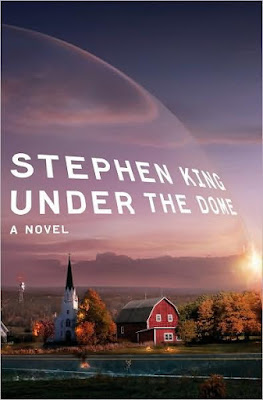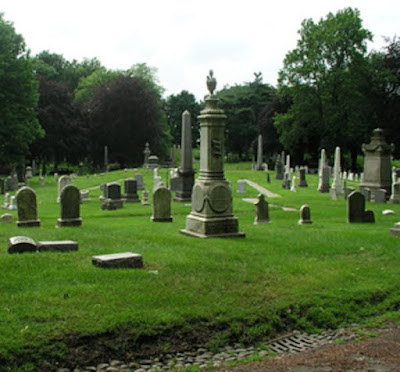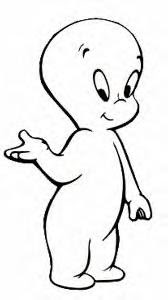
The evil spread by Big Jim Rennie and his cohorts is also having dire effects upon the people of Chester’s Mill. Two citizens, Angie McCain and Dodee Sanders, have been killed by Junior Rennie, and two others, the Reverend Lester Coggins and Brenda Perkins, have been killed by Big Jim himself. Several townspeople were injured, some seriously, during the riot at, and looting of, Food Town. Samantha Bushey, beaten and raped by Special Deputies Frank DeLesseps, Melvin Searles, and Carter Thibodeau, while Special Deputy Georgia Roux assists by holding the victim down and urging her colleagues on, shoots two of them (Frank and Georgia) before killing herself with the same handgun and leaving her eighteen-month-old son Little Walter a virtual orphan, given the indifference and madness of his methamphetamine-addicted father, Phil (“The Chef”). The descent of the dome has killed several animals and human beings as well, including Claudette Sanders, the late wife of First Selectman Andy Sanders and the father of the late Dodee. Rory Dinsmoore’s ill-advised attempt to shoot his way through the dome with a high-powered rifle cost him first an eye and then his life.
Adding to the horror of these deaths is the townspeople’s ignorance as to the cause of the dome and its descent and of the cause of the madness that grips some of the townspeople (The Chef, Junior, and Big Jim himself, among others). One cannot fight what one does not understand, and the inability to protect and defend oneself and others increases one’s sense of helplessness and desperation.
So far, the protagonist, Colonel Dale (“Barbie”) Barbara (jailed since page 533), and his supporters have discovered little of the truth behind the bizarre events that have transpired and continue to transpire in their town. Joe McClatchey and his friends Norrie Calvert and Benny Drake, using a Geiger counter supplied to them by Barbie before Barbara was jailed, have located what they believe may be the generator that created and sustains the dome. Physician’s assistant Rusty Everett, in having examined the bodies of the Reverend Lester Coggins and Brenda Perkins, surmises that the former was struck by a baseball and that the latter’s neck was broken. The former chief of police and Brenda’s late husband, Howard (“Duke”) Perkins, an early victim of the dome, has compiled a file of incriminating evidence concerning Big Jim’s theft of public funds and manufacture and distribution of methamphetamine. The townspeople also know that neither the direct hit of a pair of Cruise missiles nor the dousing of the dome with an experimental acid capable of melting solid rock had any effect on the barrier. In addition, they have a few fairly strong suspicions about some of the strange incidents that have happened since the dome’s descent. They suspect that Big Jim organized the Food Town riot as an excuse seize more power for himself and to further bolster the ranks of Chester’s Mill’s finest. They suspect that he is behind the arson that resulted in the burning down of newspaper owner and editor Julia Shumway’s business and residence. They suspect that Big Jim has framed Barbie for the murders of his and Junior’s victims. Samantha Bushey identified Frank DeLesseps, Melvin Searles, Carter Thibodeau, and Georgia Roux as her attackers, although they denied her allegations and have never been charged, arrested, or tried.
That’s what, to date, the townspeople know or suspect. They don’t know the origin or the nature of the dome, although there are plenty of theories as to how it came to be and who may be responsible for its descent. Some believe it is the work of extraterrestrials. Others think it is the result of a terrorist attack by a rogue nation. Still others suspect that the United States put the dome in place, using its own citizens as subjects of a sinister experiment. Perhaps the dome is the invention of a criminal genius, some suppose, or a living entity, others imagine.
Once again, the characters’ partial knowledge and total ignorance, coupled with rumors and suspicions (some founded, some not) increase their fear and sense of helplessness while, at the same time, heightening the story’s suspense.
But King also arouses the reader’s suspense by extending the population of the town in an unusual manner. In an earlier scene, King surprises the reader by including the dead among the living in his catalogue of the townspeople of Chester’s Mill who did not witness the phenomenon of the falling pink stars, as if he were suddenly writing a sequel to Our Town or Spoon River Anthology. The effect is startling, and shows that, even after all these years, King can surprise his readers.
Now, in a scene out of The Sixth Sense, one of his characters--and a canine one, at that--Horace, Julia Shumway’s Corgi, hears a voice as he eats popcorn spilled by Andrea Grinnell, with whom Horace and Julia are staying, following the loss of Julia’s home and business to the Molotov cocktails tossed by Big Jim’s henchmen. As the dog is eating the spilled popcorn he has found under an end table, he encounters the file of incriminating evidence against Big Jim Rennie that the late Police Chief Perkins had gathered. His widow, Brenda, at Barbie’s behest, had taken it to the third selectman for safekeeping. Andrea, in seeking to kick her addiction to pain pills cold turkey, had promptly forgotten her visitor’s visit. Apparently, both Andrea and Julia have also forgotten the file itself (since neither of them mentions it again or looks for it.) As Horace comes across the file, however, he hears the voice:
. . . Horace was actually standing on his mistress’ name (printed in the late Brenda Perkins’s neat hand) and hoovering up the first bits of a surprisingly rich treasure trove, when Andrea and Julia walked back into the living room.Unfortunately, Horace is confused, thinking (yes, King’s mutts are quite good at cognitive activity, in their own doggy way, much as are the canines that frequent rival writer Dean Koontz’s cloyingly sentimental fiction), and the Corgi, able to distinguish between “peoplefood” [sic] and “floorfood” [sic], thinks that it is “ridiculous” to imagine that Julia would. . . eat anything that had been in his mouth,” and, in his confusion, the misplaced file remains undiscovered--at least, by the human characters--and Horace himself forgets “all about the dead voice [sic]” (695).
A woman said, Take that to her.
Horace looked up, his ears pricking. That was not Julia or the other woman [Andrea]; it was a deadvoice [sic]. Horace, like all dogs, heard dead voices [sic] quite often, and
sometimes saw their owners. The dead were all around, but living people saw them
no more than they could smell most of the ten thousand aromas that surrounded
them every minute of every day.
Take that to Julia, she needs it, it’s hers (694).
Why does King include this scene? Is it simply to remind the reader of the file’s existence and that it is still available to the enemies of Big Jim Rennie? If so, there are other, simpler and more expedient ways to accomplish this end. In fact, King has reminded the reader of the file’s existence, if not its specific location, several times already, through characters’ dialogue concerning the file. Obviously, King does not want the file to be discovered yet, because Julia was about to do just this when she turned away from the end table under which it lies, concerned about Andrea as the selectman began to make gagging sounds, prior to regurgitating her morning’s “raisin bun”:
She bent to look into the gap between the couch and the wall.If the purpose of the scene isn’t for Julia to find the file, why did King write it? Why did he bring forth the ghost of Brenda Perkins to tell Horace to take the file to Julia? In regard to the answers to such questions, the reader, at this point, is left hanging, so to speak, but King has certainly raised the question as to why he has deliberately emphasized, once again, as he had in including the dead among the living in his listing of the names of those residents of Chester’s Mill who had not seen the fall of pink stars, a link between the living and the dead. He deliberately introduces an element of the supernatural when such an intrusion is not necessary to the telling of his story and is, in fact, even a bit disconcerting, requiring, as it does, yet an additional suspension of disbelief, beyond that needed to accept the sudden dropping down of a mysterious, transparent “dome“ over an entire town. In doing so, he sets up the expectation that, sooner or later, this connection between the living and the dead of Chester’s Mill will have narrative (and, perhaps, thematic) significance. Of course, in setting up the reader’s expectation that he will deliver on his implied promise to account for this link between the quick and the dead, King also generates a ton of suspense.
Before she could, the other woman began to make a gagging
noise. . . (695).






 What about ghosts? How might our fictional skeptic debunk them and their ghostly deeds? Supposedly, a ghost is the spirit of a dead person. Over the years, ghosts have collected quite a list of characteristics:
What about ghosts? How might our fictional skeptic debunk them and their ghostly deeds? Supposedly, a ghost is the spirit of a dead person. Over the years, ghosts have collected quite a list of characteristics: 





